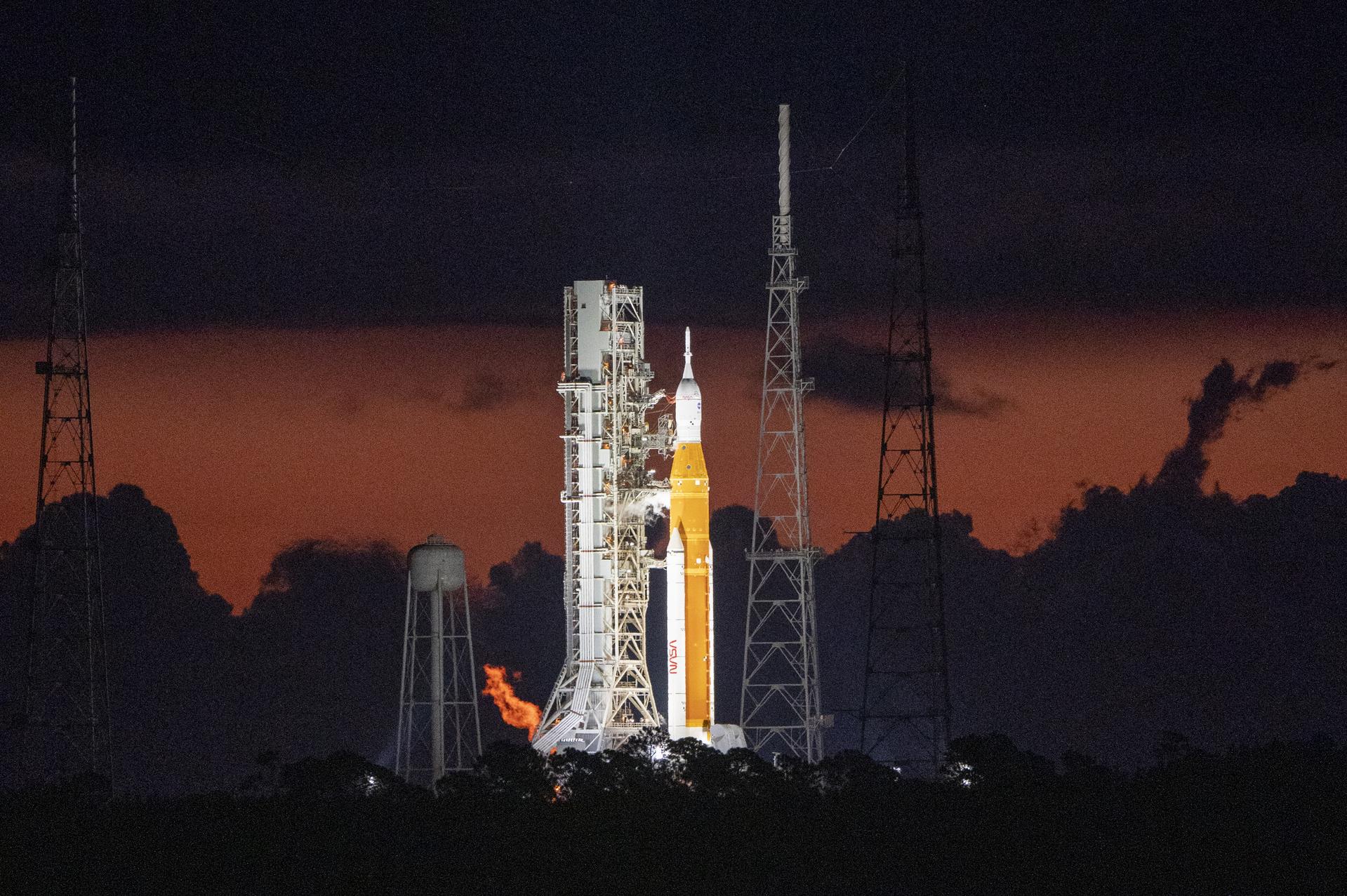Nasa Moon rocket launch unlikely to be ruined by weather, Space Force says
Nasa and the US Space Force see opportunities to launch a Moon rocket despite forecase rain showers on Saturday

Your support helps us to tell the story
From reproductive rights to climate change to Big Tech, The Independent is on the ground when the story is developing. Whether it's investigating the financials of Elon Musk's pro-Trump PAC or producing our latest documentary, 'The A Word', which shines a light on the American women fighting for reproductive rights, we know how important it is to parse out the facts from the messaging.
At such a critical moment in US history, we need reporters on the ground. Your donation allows us to keep sending journalists to speak to both sides of the story.
The Independent is trusted by Americans across the entire political spectrum. And unlike many other quality news outlets, we choose not to lock Americans out of our reporting and analysis with paywalls. We believe quality journalism should be available to everyone, paid for by those who can afford it.
Your support makes all the difference.Weather conditions are relatively favorable for Nasa’s Moon rocket launch scheduled for Saturday afternoon, according to the most recent forecast by the US Space Force’s 45th Weather Squadron.
The two hour launch window for Nasa’s Artemis I opens at 2.17pm EDT on Saturday, and weather conditions are 60% likely to be favorable, according to the Space Force forecast. Though, sporadic rain showers are possible. During a 30 August press conference, Space Force launch weather officer Mark Burger noted that given the weather patterns near the launch site at Kennedy Space Center in Florida, “typically, these showers are quite sporadic, if they reach the coast.”
He added that the probability of weather putting a hold on the launch countdown at some point was relatively high, but that “these showers tend to have quite a bit of real estate between them , so I still think we have a good opportunity, weather-wise, to launch on Saturday.”
Nasa first attempted to launch the Artemis I mission on Monday 29 August, but ultimately scrubbed the launch for that day after a series of problems conditioning one of the rocket’s engines for launch. Artemis I consists of Nasa’s new Space Launch System (SLS) rocket, the most powerful rocket ever to fly, and the Orion spacecraft, which will both make their first uncrewed test flight to the Moon and back during the 42-day mission.
Weather was also a factor, with rain and potential thunderstorms forecast for the beginning and end of the two hour morning launch window.
Lightning did strike near the launch pad on Saturday 27 August, as Nasa was preparing to begin the launch countdown, but did not do any damage. Such storms are a major factor in whether or not Nasa will fuel or launch a rocket.
“One of the constraints that we have weather wise is that the threat of lightning within five miles of the pad must remain at or below 20%,” Mr Burger told reporters.
Fueled with liquid hydrogen and liquid oxygen, Nasa’s SLS rocket could be sensitive to lightning strikes, and the space agency will avoid loading the flammable cryogenic propellants if there is the risk of a thunderstorm in the area.
A lightning strike does not guarantee a disaster however: The Apollo 12 mission was struck by lightning during its ascent in 1969 and the rocket and spacecraft continued on to orbit safely.
Nasa will start the countdown for Saturday’s launch attempt at 4.37am EDT, and the launch team will meet to discuss the weather and decide whether to proceed with fueling the rocket during a planned 40 minute hold in the countdown.
Live coverage of the rocket’s fueling, or “tanking” operations, if they proceed, will begin at 5.45am EDT Saturday, and will be carried on Nasa TV.
Artemis I is the first mission of Nasa’s new Artemis Moon program, which seeks to put humans back on the Moon by 2025. Following a successful uncrewed lunar flyby with Artemis I, Artemis II will see a human crew fly around the Moon and back in May of 2024.
Artemis III, currently scheduled for 2025, will see Nasa astronauts land on the lunar South Pole, the first time humans will have stepped foot on the Moon since Apollo 17 in 1972.
Join our commenting forum
Join thought-provoking conversations, follow other Independent readers and see their replies
Comments